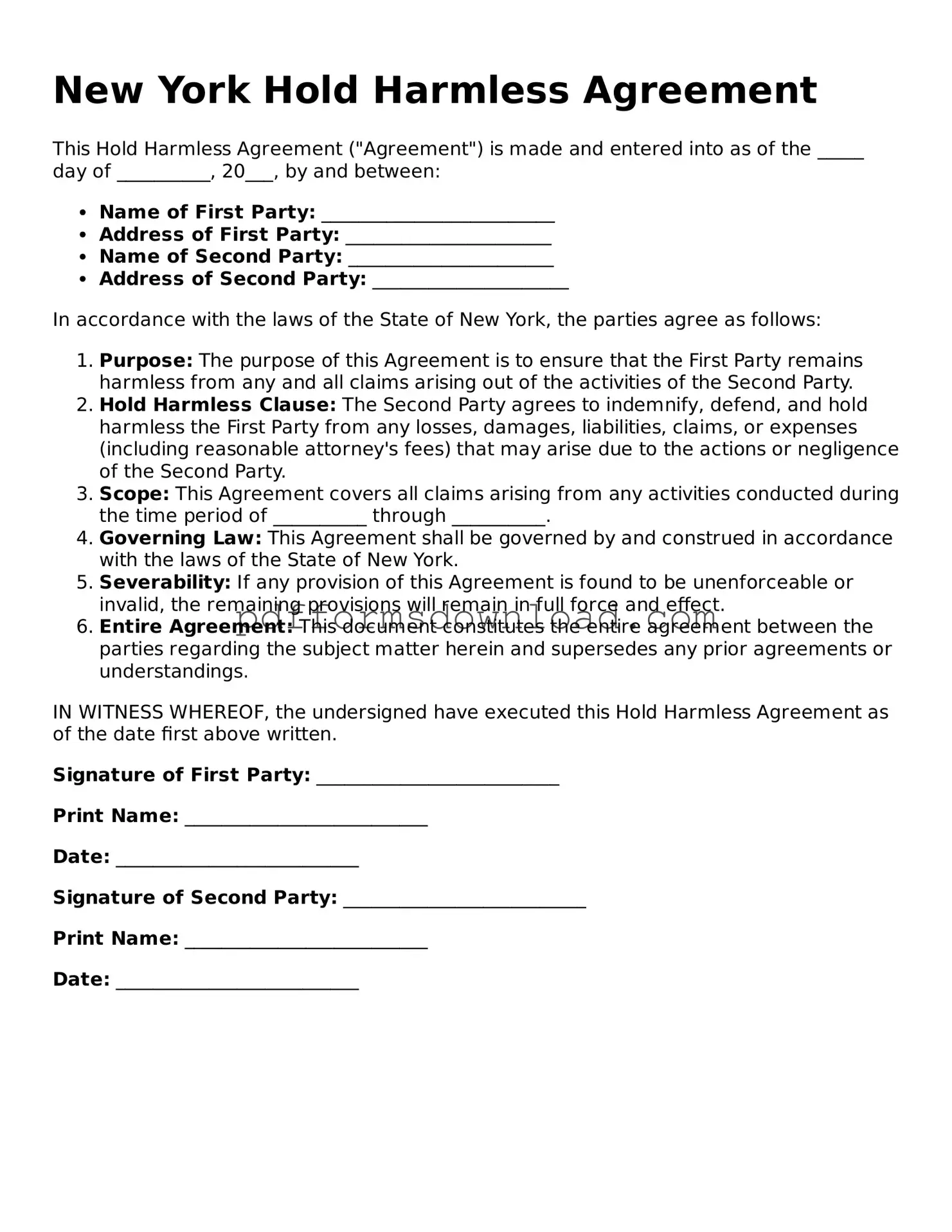What is a Hold Harmless Agreement in New York?
A Hold Harmless Agreement is a legal document designed to protect one party from liability for certain actions or events. In New York, this agreement typically requires one party to agree not to hold another party responsible for any damages, injuries, or losses that may occur during a specified activity or event. These agreements are commonly used in various contexts, including construction projects, recreational activities, and rental agreements. By signing this document, the party assumes the risk associated with the activity, thereby limiting the potential for legal claims against the other party.
Who should use a Hold Harmless Agreement?
Individuals and organizations involved in activities that carry inherent risks should consider using a Hold Harmless Agreement. For instance, property owners renting out their facilities for events may want to protect themselves from liability claims arising from accidents. Similarly, contractors working on construction sites may require subcontractors to sign such agreements to mitigate their own liability. It is essential for both parties to understand the implications of the agreement and to ensure that it is appropriately tailored to their specific situation.
Are Hold Harmless Agreements enforceable in New York?
Yes, Hold Harmless Agreements are generally enforceable in New York, provided they meet certain legal requirements. The agreement must be clear and unambiguous, outlining the specific risks being assumed. Courts will typically uphold these agreements unless they are found to be unconscionable or contrary to public policy. It is important for parties to seek legal advice when drafting or signing these agreements to ensure they comply with New York law and adequately protect their interests.
What should be included in a Hold Harmless Agreement?
A comprehensive Hold Harmless Agreement should include several key elements. First, it should clearly identify the parties involved. Next, it should specify the activities or events covered by the agreement. Additionally, the document should outline the scope of the indemnification, detailing what types of claims are being waived. It is also advisable to include a clause addressing the governing law and any limitations on liability. Finally, both parties should sign and date the agreement to ensure its validity.
